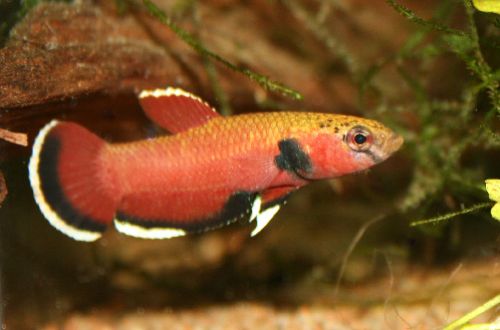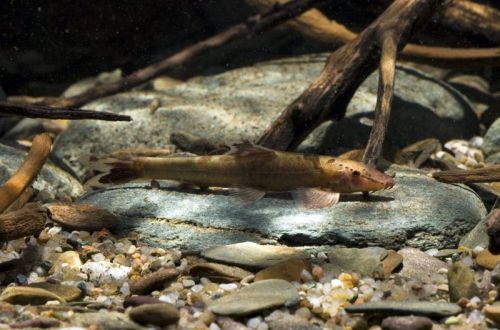
Tetra Pepper
Axelrhodia pinkish or Tetra-Pepper, scientific name Axelrodia stigmatias, belongs to the Characins (Characin) family. The fish is named after an American entrepreneur and one of the biggest promoters of the aquarium hobby. Another colloquial name “Pepper” is apparently associated with a variety of Peruvian hot pepper, an analogy with which was drawn in relation to this small but active fish.

Contents
Habitat
It comes from South America from the western Amazon from the Ucayali river basin in Peru to the confluence of the Solimões and Rio Negro. Fish inhabit small channels and streams, and not the main riverbeds. The typical habitat is a stream flowing under the canopy of the rainforest, the channel of which is littered with snags and fallen leaves. Water, as a rule, is colored brown due to the abundance of dissolved tannins.
Brief information:
- The volume of the aquarium – from 40 liters.
- Temperature – 20-28°C
- Value pH — 4.0–6.5
- Water hardness – 1–5 dGH
- Substrate type – sandy
- Lighting – subdued
- Brackish water – no
- Water movement is weak
- The size of the fish is about 2 cm.
- Food – any food
- Temperament – peaceful
- Keeping in a group of 8-10 individuals
Description
Adult individuals reach a length of up to 2 cm. Sexual dimorphism is weakly expressed, there are no obvious differences between the sexes. The fish have a rather large head in comparison with the body. The color is silvery with pink hues. A characteristic feature of the species are red-black markings at the base of the tail.
Food
In nature, it feeds on zoo- and phytoplankton. In the home aquarium, it will accept most popular foods designed for aquarium fish. The daily diet may consist of dry, live or frozen foods such as flakes, pellets, daphnia, bloodworms, brine shrimp, etc.
Maintenance and care, arrangement of the aquarium
The optimal size of the aquarium for a group of 8-10 fish starts from 40-50 liters. It is recommended to keep in an aquarium, the design of which resembles a natural habitat. As decor elements, sandy soil, driftwood and several shade-loving plants are usually used. The lighting level is subdued.
An important part of the design will be the dried leaves of some trees that cover the bottom. By analogy with the processes occurring in natural reservoirs, the leaves, during decomposition, release tannins, which serve as an excellent antimicrobial and antifungal agent. At the same time, the water turns brown.
Successful keeping of Tetra-Pepper depends on maintaining stable water conditions within an acceptable range of temperatures and hydrochemical values. It is impossible to allow the accumulation of organic waste and the achievement of dangerous concentrations of nitrogen cycle products (nitrites, nitrates, ammonia).
Behavior and Compatibility
Peaceful moving fish. Although they are not schooling fish species (males are territorial), it is still worth maintaining a group size of at least 8-10 individuals, with a smaller number they can become overly shy. Due to their size, they can become an accidental prey for larger fish.
Breeding / breeding
In favorable conditions, spawning is quite possible. Females spawn among thickets of plants. There is no care for the offspring, the fish are prone to eating their own caviar and fry. If breeding is planned, then the eggs should be transferred to a separate tank for their safety.
Fish diseases
Diseases inherent in this particular species of fish were not noted. When kept in suitable conditions (high water quality, balanced diet, non-conflict neighbors, etc.), health problems are not observed. The most common cause of disease is the deterioration of conditions leading to immune suppression, which makes the fish susceptible to infections that are invariably present in the surrounding area. When the first signs of an illness are detected (lethargy, exhaustion, refusal of food, lowered fins, etc.), it is necessary to immediately check the main parameters of the water. Often, the restoration of acceptable living conditions contributes to self-healing, but if the fish is too weak or has received obvious damage, medical treatment will be required. For more information on symptoms and treatments, see the Aquarium Fish Diseases section.





